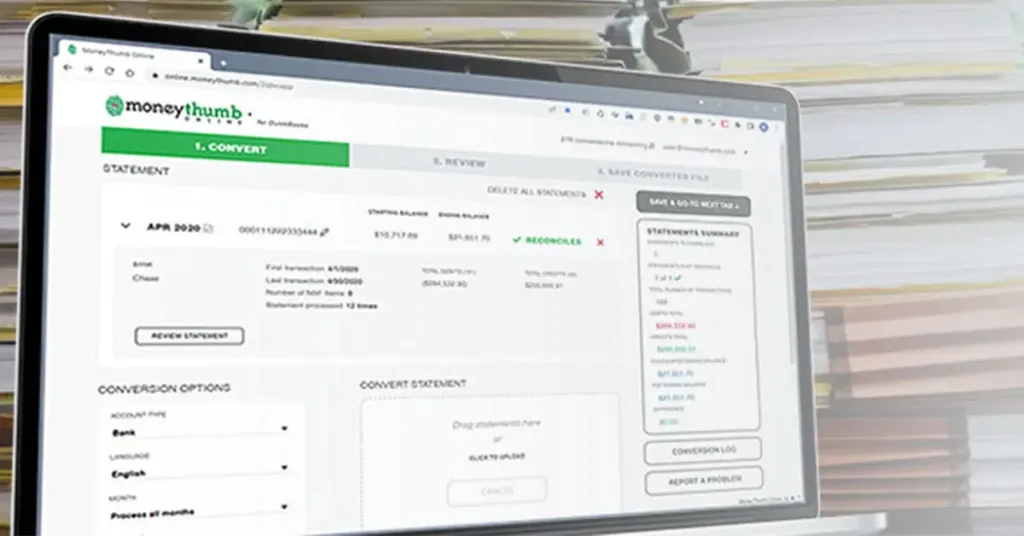Ranking an accounting practice website at the top of Google’s organic search results is not a quick task. It requires patience, consistent effort, and a clear understanding of how search engines assess websites. In this article, we’ll break down the methods that work in today’s search landscape, explain why they matter, and provide practical steps any accounting firm can take to rise above the competition. You’ll find insights based on tested SEO practices, supported by current facts and real-world application, not fluff.
Why SEO Matters for Accounting Firms
Most potential clients begin their search for accounting services online. According to a 2024 BrightLocal survey, 87% of people used Google to evaluate local service providers, including accountants. Appearing on the first page of results, ideally within the top 3, is critical, as research shows that over 68% of clicks go to the top three results. Organic search is not paid advertising. You don’t buy your way to the top; you earn it by making your site useful, trustworthy, and relevant.
Step 1: Start With Proper Keyword Research
Before you optimize anything, you need to know what people are actually typing into Google when looking for accounting services. You’re not aiming for guesswork here. Use tools like:
- Google Keyword Planner
- Ahrefs
- SEMrush
- Ubersuggest
Focus on terms that show clear intent. For example:
- “small business accountant near me”
- “tax accountant for freelancers”
- “CFO services for startups”
Avoid broad terms like “accounting,” as they’re too competitive and too vague. Instead, look for specific phrases with medium competition and local relevance.
Fact: According to Ahrefs, 92% of keywords get fewer than 10 monthly searches. The goal isn’t to target thousands of people. The goal is to reach the right people.
Step 2: Build a Clear, User-Friendly Website
Google cares deeply about how people interact with your website. If users leave quickly or struggle to navigate, your rankings will suffer.
Key points to address:
- Site Speed: Compress images and use reliable hosting. Aim for load times under 3 seconds.
- Mobile Responsiveness: Over 60% of web traffic is mobile. If your site doesn’t display well on phones, you’re losing leads.
- Simple Navigation: Use a clean menu with clear labels like “Services,” “About Us,” “Pricing,” and “Contact.”
- Clear Contact Info: Place your phone number, email, and address in the footer and on a separate contact page.
Step 3: Create Pages for Each Service
Many accounting websites make the mistake of listing all services on a single page. That limits your SEO potential. Instead, create individual pages for each core service.
For example:
- Bookkeeping Services
- Tax Filing for Businesses
- Audit Preparation
- Virtual CFO Services
Each page should:
- Focus on one topic
- Include a unique title and meta description
- Use natural language that matches what your audience would search for
Example: A “Tax Services” page might target “small business tax filing in [City]” as the primary keyword.
Step 4: Write Valuable Blog Content
Google favors websites that regularly publish helpful content. Blogs are not just filler; they help you answer common questions and target long-tail keywords (searches with more specific phrasing).
Ideas for your blog:
- “What Can an Accountant Do for a Freelancer?”
- “5 Tax Mistakes Small Businesses Make Every Year”
- “When Should You Hire a Virtual CFO?”
Publishing once or twice a month is enough if the content is well-written and focused.
Stat: Companies that publish 16+ blog posts per month get 3.5x more traffic than those that post 0–4 times monthly (HubSpot).
Even if you’re not posting that often, the key is consistency.
Step 5: Use Local SEO Strategies
Accounting is a local service for many clients. That’s why local SEO is essential.
Set Up and Optimize Your Google Business Profile
This is one of the strongest signals for local rankings. Your profile should include:
- Business name, address, and phone (NAP)
- Hours of operation
- Website link
- Services
- Photos of your office or staff
- Real reviews
Make sure the NAP info is the same across all platforms: your website, Yelp, LinkedIn, directories, etc.
Local Content
Include your city or region in your service pages and blog posts. Example: “Bookkeeping for Startups in Houston”
Also, write about topics relevant to your niche and location:
- “Tax Deadlines for Small Businesses in California”
- “What to Know Before Hiring an Accountant in Toronto”
Step 6: Get Quality Backlinks
A backlink is when another website links to your site. Google sees this as a signal that your site is worth visiting.
Ways to earn backlinks:
- Guest Posts: Write for finance or local business blogs.
- Local News: Share expert opinions during tax season with local media.
- Business Directories: Submit your site to trusted platforms like Clutch, UpCity, and Alignable.
- Professional Associations: If you’re a member of CPA networks or chambers of commerce, list your website.
Fact: According to Backlinko, pages with more backlinks rank higher than those with fewer backlinks 99% of the time.
It’s not about volume, it’s about quality. Ten links from relevant, trusted sites will do more for you than 100 from unrelated blogs.
Step 7: Optimize Your On-Page SEO
This refers to what’s on each page: the text, tags, and structure. Here’s what to focus on:
- Title Tag: This appears in Google’s search results. It should be under 60 characters and include your main keyword.
Example: “Affordable Tax Accountant for Small Businesses in Miami”
- Meta Description: A short summary under the title. Use 1–2 keywords, but keep it natural.
- Header Tags (H1, H2, H3): Use these to organize your content clearly.
- Image Alt Text: Add descriptions to your images for screen readers and SEO.
- Internal Linking: Link related pages together (e.g., your blog post on bookkeeping links to your bookkeeping service page).
Step 8: Add Client Reviews and Case Studies
People trust proof. Google does too. Add a review section to your site and encourage satisfied clients to post on Google.
Case studies also help. Even short examples can show how you’ve helped real businesses reduce expenses, prepare for audits, or manage cash flow better.
Example:
“After we took over ABC Construction’s bookkeeping, they saved $15,000 in missed deductions in their first year.”
This isn’t bragging, it's helping future clients understand your value.
Step 9: Improve Technical SEO
This step is less visible but very important. Technical SEO helps Google crawl and understand your site.
What to fix:
- Broken Links: Check with tools like Screaming Frog or Ahrefs.
- xml: Make sure it exists and is submitted to Google Search Console.
- txt: This tells search engines what pages to crawl or ignore.
- HTTPS: Use a secure certificate (SSL). Google ranks HTTPS sites higher than non-secure ones.
If you’re not comfortable doing this yourself, many SEO tools or web developers can help.
Step 10: Track Progress
Once the accounting website has the right SEO foundation and starts running, it is important to monitor its performance. By tracking progress, you can see what is working, what needs to be improved, and where you need to focus. If you omit this step, you will be in a groping state and waste time.
Start with the following essential tools:
Google Analytics
This free tool allows you to understand where traffic to the website comes from, such as search, referral, or direct visit. You can also check the page, time of stay, and timing of departure that the user has viewed. This detailed information provides a clear overview of user behavior.
Google Search Console
This tool shows how the site is displayed in Google Search, the search keywords the user is using to find you, and the ranking fluctuations on the timeline. It also informs you of technical issues that adversely affect your ranking, such as indexing issues, corrupted pages, or slow-loading content.
Ahrefs or SEMrush
These tools provide detailed analysis of keyword performance and backlinks. You can see pages that are linked from other sites, rankings of competitors, and keywords that guide traffic. These insights help make more effective content and SEO decisions.
Note: The effect of SEO does not appear overnight. Especially in competitive areas such as accounting, it is common to gradually improve over three to six months. However, if it is done correctly, progress will accumulate over time. Unlike advertising, organic traffic does not stop when spending stops. Continue to grow and attract leads as long as the content remains relevant and useful.
Final thoughts
Ranking your accounting website isn’t about chasing trends. Create value, clearly organize information, and make it easy for Google and potential clients to find what they want.
No tricks. This is a process of understanding and clearly writing the target layer and showing an online presence in an important location. If your website reflects your client's response - reliable, and easy to work with - the chances of higher display in search results are significantly increased. And once you reach that top position, you get the right attention without spending thousands of dollars on advertising.
References
- https://writesonic.com/blog/seo-for-accountants
- https://backlinko.com/rank-high-on-google
- https://www.cpasitesolutions.com/cpa-websites/2024/06/how-to-create-an-seo-friendly-accountants-websites/
- https://backlinko.com/google-ctr-stats
- https://www.feedbackwrench.com/post/7-steps-to-excellent-seo-for-accounting-firms
- https://financial-cents.com/resources/articles/seo-for-accountants/
- https://www.progeektech.com/post/the-importance-of-seo-for-accountants-how-to-rank-higher-on-google
- https://www.rankingbyseo.com/blog/accounting-website-design/
- https://www.bubblehub.ie/blog/seo-for-accountants-guide
- https://www.practiceweb.co.uk/knowledge/how-to-get-more-leads-for-your-accounting-firm-through-seo/





















Add comment